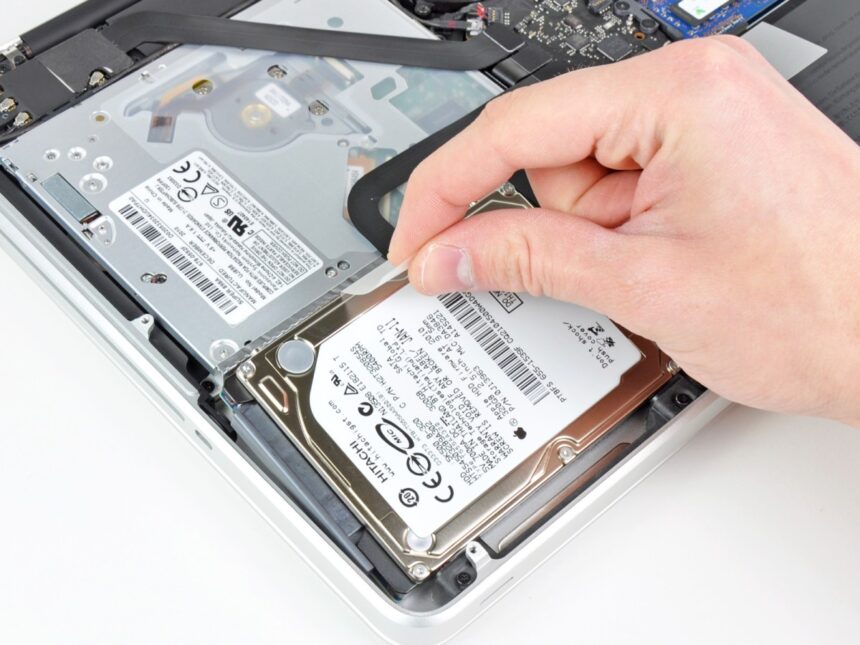If you have been wondering whether you need to defragment your Mac Hard Drive, you are not alone. Many people who switch from Windows to macOS or who have used older computers in the past assume that defragmentation is a standard part of computer maintenance.
On Windows PCs, the practice was once essential, and system tools even encouraged users to “defrag” their drives to keep things running smoothly. On a Mac, however, the story is very different. Apple’s macOS is built on file systems that largely prevent fragmentation from becoming a real issue in the first place.
This article will guide you through everything you need to know about defragmenting a Mac Hard Drive when it may be useful, when it is harmful, and the practical steps you can take to keep your system fast and healthy every day.
Why most Mac Hard Drives don’t need defragmentation
One of the biggest misconceptions about Macs is that they require the same kind of hands-on disk maintenance as Windows PCs. Since the release of OS X 10.2 Jaguar, Apple has designed its operating system with automatic optimizations that handle small-scale fragmentation behind the scenes.
The file system ensures that frequently used files are placed together in efficient clusters, and it automatically defragments smaller files as they are modified or moved. This means that in most cases, users will never notice the performance drag that Windows users once associated with fragmented disks.
According to Crucial, the system has been handling these tasks for decades without any user intervention, which explains why macOS does not even include a built-in defragmentation tool.
The introduction of Apple File System (APFS), which is now the standard for modern Macs, took this one step further. APFS was designed with flash storage in mind, providing instant access across memory cells without the mechanical read/write head that older hard drives required.
As a result, file fragmentation is not only less of a concern, but for many users it is a complete non-issue. This is why experts at MacPaw and AVG consistently remind Mac owners that, for the majority of cases, defragmentation is unnecessary.
When defragmenting a Mac Hard Drive might actually help
There are, however, a few exceptions. If you are using an older Mac with a traditional spinning hard disk drive (HDD), and especially if your disk is nearly full, fragmentation can creep in and reduce performance.
Unlike solid-state drives, HDDs store information on spinning platters, and if large files are scattered in small pieces across the drive, the mechanical arm has to work harder to retrieve them. This can create noticeable delays, particularly for people who work with high-resolution video, complex graphics, or other very large files.
In such cases, the experience can resemble the sluggishness that once plagued Windows machines before defragmentation became a common fix.
Another scenario where defragmentation may play a role is when you are partitioning your Mac Hard Drive for something like Boot Camp. Creating a Windows partition requires large chunks of contiguous space, and if your disk is heavily fragmented, the process can fail.
Apple’s support forums have numerous discussions where users discovered that their inability to create a partition stemmed from underlying fragmentation.
In rare cases like this, going through the process of clearing, cloning, and restoring your drive can help. Apple Discussions offers community-tested workflows for people facing this situation.
A safe method to defragment without damaging your Mac
If you are one of the rare users who genuinely needs to defragment a Mac Hard Drive, the safest way is not to use third-party “one-click defrag” utilities. Instead, the recommended practice is to back up your system, erase the drive, and restore everything cleanly.
This approach achieves the same end result as a traditional defrag your files are written back onto the drive in contiguous blocks but without the risk of damaging your macOS installation or corrupting important data.
The process begins with a full backup. Using Time Machine, iCloud, or a trusted external backup tool ensures that nothing is lost if something goes wrong. Many seasoned users prefer creating a bootable clone of their Mac Hard Drive using software like Carbon Copy Cloner or SuperDuper!.
Once you have a safe clone, you restart your Mac from that external drive. Booting from the clone allows you to erase your internal drive using Disk Utility. A secure erase not only removes fragmentation but also remaps problematic sectors.
Afterward, you clone your system back from the external disk to the freshly formatted internal drive.
This workflow can feel like extra work compared to pressing a “defrag” button, but it is far safer and ultimately gives you a much cleaner, optimized system.
In fact, many advanced Mac users see this as a good way to refresh a slow machine regardless of fragmentation, because it clears out hidden junk files and resets the drive structure in the process.
Why you should never defragment an SSD
It cannot be stressed enough that solid-state drives should never be defragmented. Unlike HDDs, which benefit from files being stored in consecutive physical sectors, SSDs access data electronically with near-instantaneous speed no matter where the data resides.
Defragmentation on an SSD is not only pointless but actively harmful because it involves rewriting data unnecessarily. Every write cycle shortens the lifespan of the flash memory, and since SSDs already have a limited number of these cycles, defragmentation only wastes valuable endurance.
Both AVG and CleanMyMac emphasize that macOS already handles SSD optimization automatically. Background processes like TRIM ensure that unused blocks are cleared and ready for new data, keeping the drive efficient without any user input.
This is why modern Macs running APFS on SSDs are considered “self-maintaining” in this respect. Attempting to defrag one not only risks damaging the drive but also provides no tangible performance gain.
Daily habits to keep your Mac Hard Drive running smoothly
Even if you never manually defragment your drive, there are several simple habits that will ensure your Mac remains fast and efficient. One of the most important practices is to keep enough free space on your disk.
A drive that is constantly running near capacity leaves little room for the operating system to manage files effectively, and this can mimic the same symptoms people often blame on fragmentation.
Experts recommend leaving at least 15 to 20 percent of your disk space unused, which gives macOS the flexibility to move and allocate files in the most efficient way possible.
It is also wise to run Disk Utility’s First Aid from time to time. This built-in tool checks for errors, repairs disk permissions, and ensures that your Mac Hard Drive’s structure is intact. It won’t perform a defrag, but it can prevent small problems from becoming major issues.
Restarting your Mac regularly also has subtle but powerful benefits, since it clears caches and temporary files that accumulate during long sessions. Many users notice an immediate performance improvement simply by rebooting once or twice a week.
Maintaining digital hygiene is another overlooked aspect of performance. Clearing browser caches, uninstalling apps you no longer use, and cleaning temporary files all reduce the burden on your drive.
Tools like OnyX, CleanMyMac, or AVG TuneUp provide safe ways to automate this process, though you can also do it manually if you prefer.
By keeping your disk organized and uncluttered, you are effectively doing the same work that a defragmenter might have done years ago but in a way that is more in tune with modern macOS design.
Final thoughts
Defragmenting a Mac Hard Drive is not the essential task it once was for PC users. Thanks to decades of engineering, macOS has matured into an operating system that manages fragmentation automatically, particularly for smaller files and for solid-state storage.
In fact, attempting to defrag an SSD can shorten its lifespan and is strongly discouraged. For most Mac users, the best path forward is to adopt simple daily habits: keep enough free space available, run Disk Utility checks, reboot periodically, and clear out unnecessary files.
For those rare cases where defragmentation is beneficial usually involving older HDDs or partitioning needs the safest route is to back up, erase, and restore rather than using quick-fix software tools.
By focusing on proactive maintenance rather than outdated practices, you not only keep your Mac Hard Drive in good shape but also extend the life and performance of your entire machine. In other words, the smartest way to “defrag” a Mac today is not by chasing old habits but by embracing the modern methods Apple has already built into its ecosystem.

